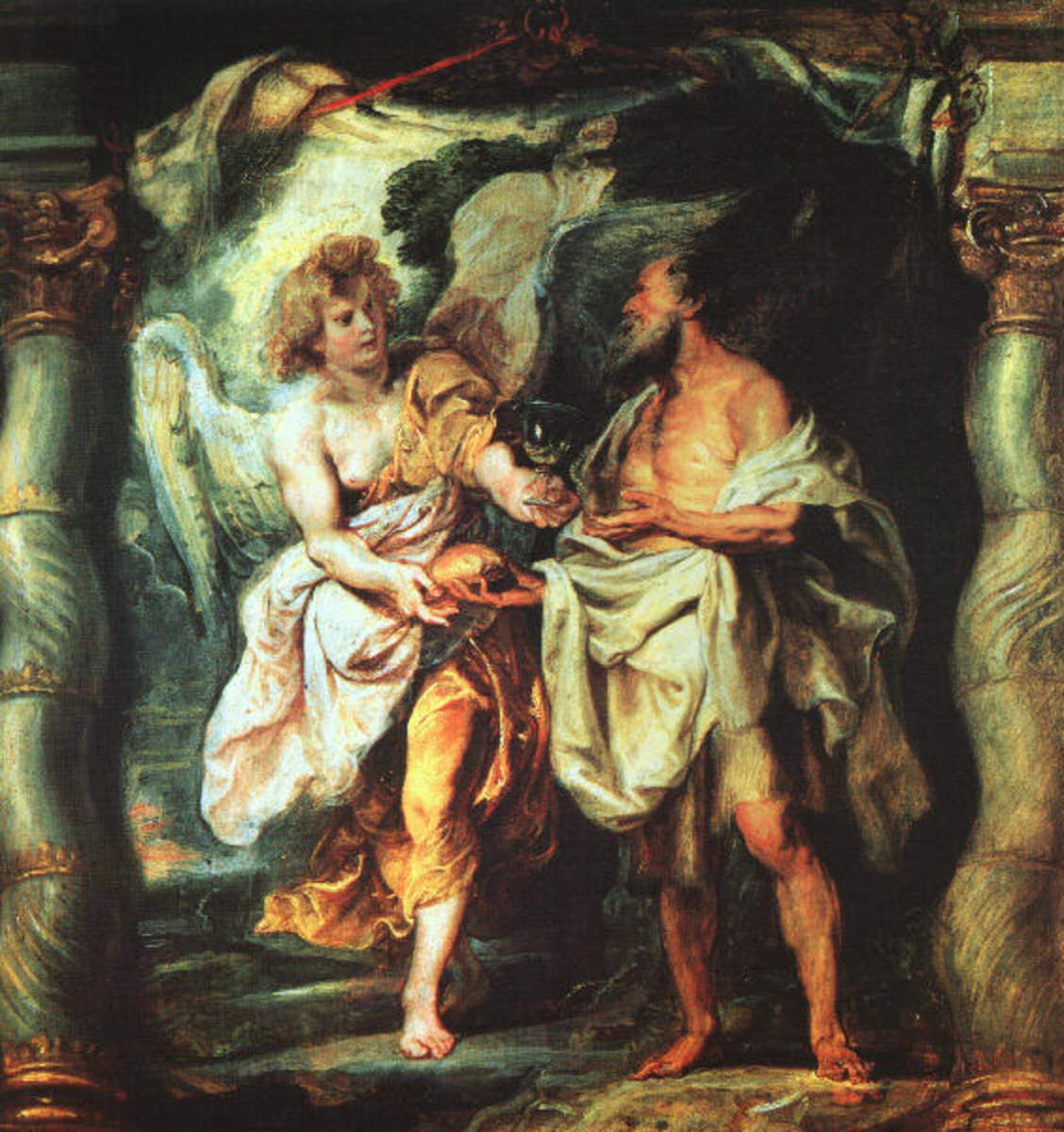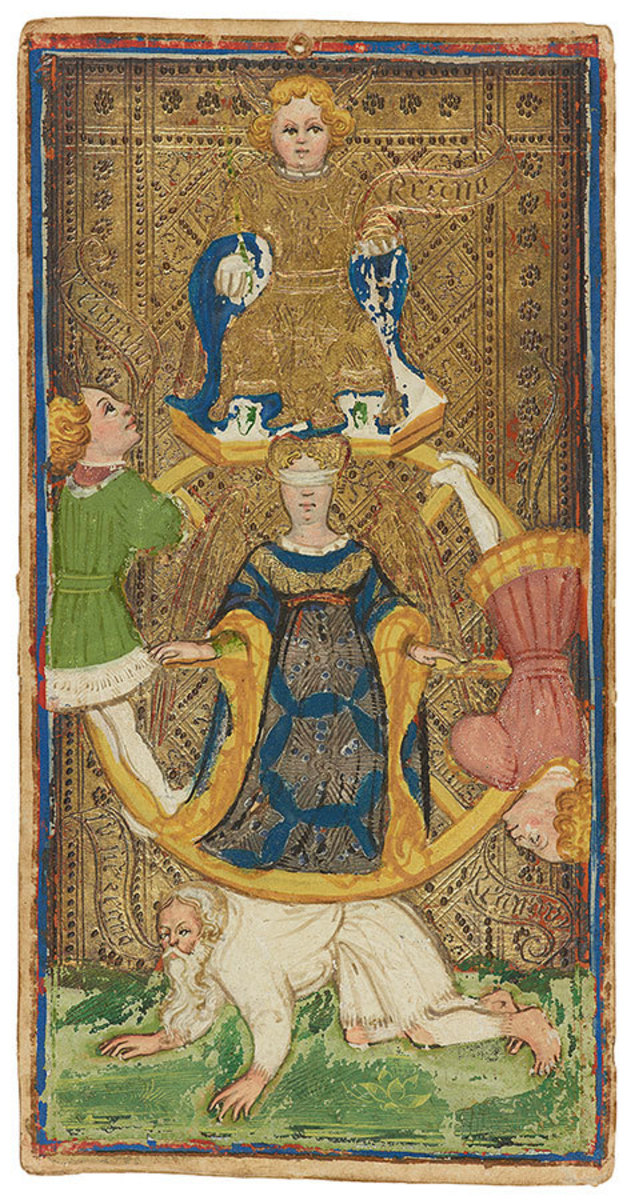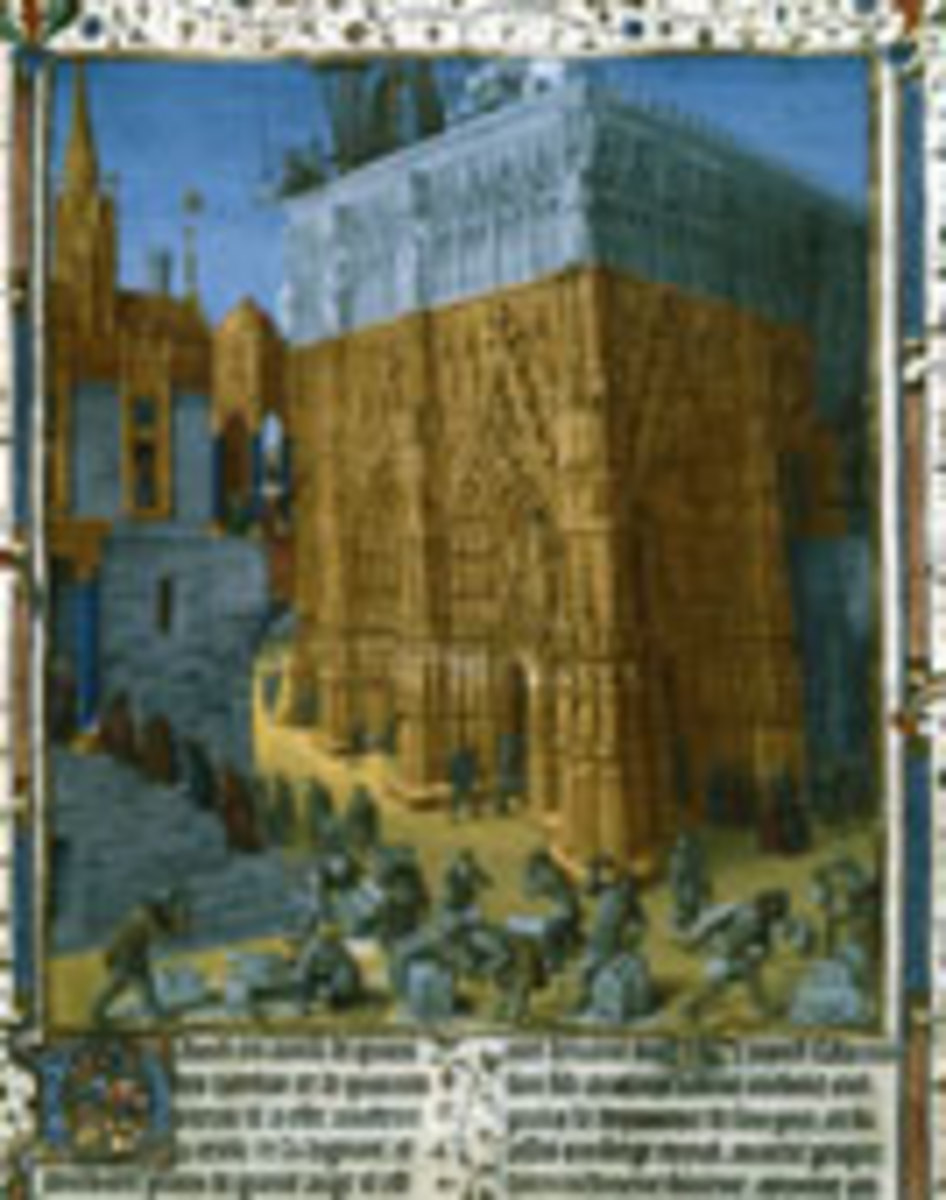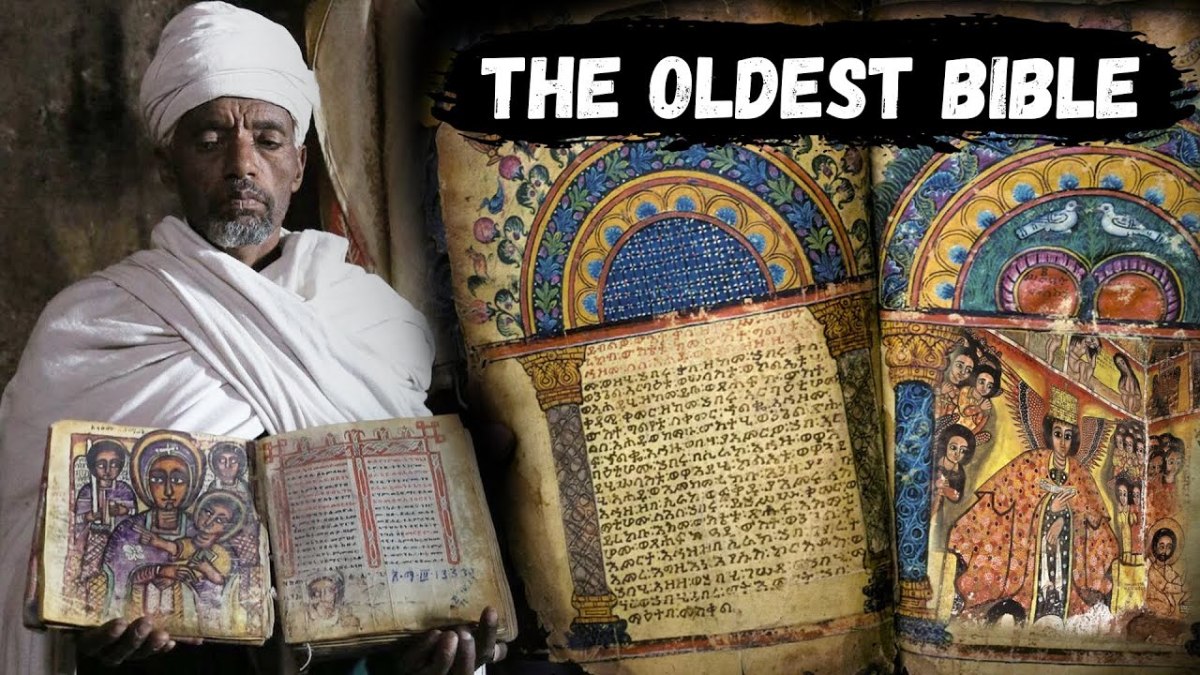Bible: What Does Ezekiel 1, 4-5 Teach Us About the Prophet's Vision of God?
The Prophet Ezekiel
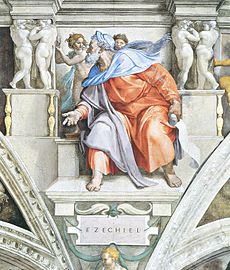
Ezekiel's Visions of God
THE BOOK OF EZEKIEL
The prophet/priest Ezekiel recounts visions of God which he witnessed near the river Chebar on a very specific date during the captivity of Jehoiachin (late sixth century B.C.) [vv. 1-3].
Notice that the word of the LORD comes to him, and the hand of the LORD is upon him (v. 3).
The first object Ezekiel sees is a fiery cloud moving with a northern whirlwind and radiating an amber brightness (God’s shekinah?) [v. 4].
Ezekiel's Vision
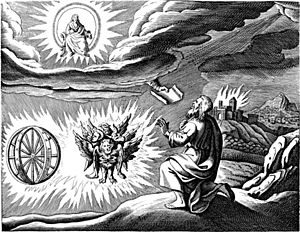
Four Living Creatures
From the cloud come four living creatures that manifest "alien" characteristics: each has four faces and four wings apiece (vv. 5-6).
The creatures also possess sparkling, bronze feet, straight legs, and human hands (vv. 7-8).
Flying in perfect control and harmony, they operate as a unit (v. 9).
Each being has man, lion, ox and eagle features (v. 10).
The prophet then provides more insight as to the position and function of their wings (v. 11), and he emphasizes their movements (v. 12).
Their appearance is like fire, perhaps indicating their holiness and their role in judgments (vv. 13-14).
[Fire or a synonym occurs six times in verses 13-14].
His focus subsequently shifts from the beings' appearance to their "wheels" (vv. 15-21).
They rest on the earth beside each creature (v. 15) and contain "works": other wheels inside the main wheels (v. 16).
In verse seventeen Ezekiel reiterates data about their movements (see vv. 9, 12).
The rims of these wheels feature many eyes--a characteristic that greatly impresses the prophet (v. 18).
Wherever the "spirit" of the creatures travels, the wheels follow (vv. 19-21).
The ease with which the object maneuvers itself fascinates Ezekiel!
Next, the prophet describes the splendor of the firmament, the creatures' overhead environment (v. 22).
Below the firmament, their wings cover their bodies behind and before them (v. 23).
Again, he mentions their movements, but this time emphasizes the impressive noise the wings make as they oscillate, likening it to three other mighty sounds within his experience (v. 24).
Then a majestic voice resounds from space overhead (v. 25).
Style of Language
view quiz statisticsThe Language of Appearance
Enraptured by the ineffable glory of God, Ezekiel can only depict the scene with the language of appearance, for no human words can adequately express this vision (vv. 26-28).
[The words "appearance" and "likeness" occur thirteen times in these three verses alone].
The prophet sees something; it is not nothing, nor is it a dream.
A throne-like shape appears, having a Man-like Being seated upon it (v. 26).
Ezekiel describes the Man's appearance as fire-like and radiant, and he can discern His waist (v. 27).
He likens the sight of the appearance of the LORD's glory to a rainbow (v. 28).
Apparently, a colorful luminosity surrounds the throne and emanates from Yahweh.
Overwhelmed by this Glory, the prophet loses all strength and eventually consciousness.
Jerusalem
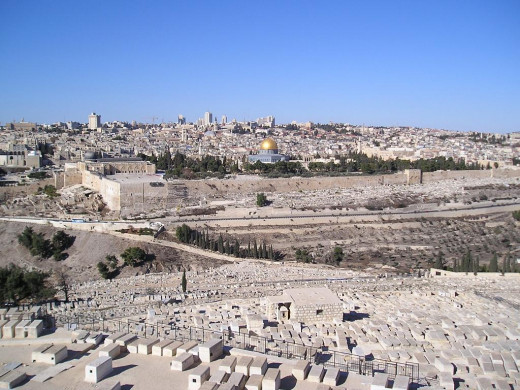
Object Lessons of Judgment
Ezekiel 4
As God commanded Jeremiah to use objects to teach Judah about judgment, so He employs Ezekiel to do the same.
The LORD instructs him to construct a model of Jerusalem and then carry on all the operations of an army besieging it (vv. 1-3).
An even stranger lesson follows. In some way Ezekiel becomes the bearer of Israel and Judah's iniquity, by lying first on his left side and then on his right side for a total of 430 days.
Each day, God says, equals one year; what the terminii are, this writer does not know (vv. 4-6).
Apparently, the prophet symbolically lays siege against Jerusalem while lying on his sides (vv. 7-8).
[He must be performing this act in full view of an audience].
God also determines the exact measure of the food and drink that the prophet should consume during his "siege," as well as the "unkosher" manner in which he must bake his bread (vv. 9-12)—all, of course, as a portrayal to Judah of what will befall them (v. 13).
Since Ezekiel recoils from the prescribed method of baking, Yahweh allows him to prepare his bread in such a way that he does not feel that he would be defiling himself (vv. 14-15).
[Was this God's test of the prophet, or a preliminary lesson of “all things are clean”? (cf. Acts 10)].
The LORD assures him that Judah's privation, as depicted in this example, will surely come to pass because of their iniquity (vv. 16-17).
Result of Famine
view quiz statisticsGod's Wrath Destroys the City
Ezekiel 5
Another object lesson is in the offing to teach Judah his destiny.
Yahweh orders His man Ezekiel to shave his head and face, and divide all the hair into three equal piles (with only a small "remnant" left for other purposes) [vv. 1-4].
Then the prophet must inflict separate “punishments” upon each third: the first, fire (pestilence and famine, v. 12), the second, the sword, and the third, banishment (v. 2).
The small remnant, however, Ezekiel should hide safely in his garment (v. 3).
Another small group—perhaps members from the ones to survive—must endure the "fire" (v. 4).
Then Yahweh begins a discourse about the awful punishment that He will permit to assault Jerusalem (v. 5).
Because her disobedience exceeded that of all peoples, even amid the greatest light—God's word (judgments, statutes) [vv. 6-7]—Jerusalem will feel the sting of the LORD's faithfulness to His vows.
He will bring horrible events to pass, including causing the city’s people to resort to cannibalizing family members (vv. 8-10).
Her idolatry especially contributes to the severity of His chastening (v. 11).
Verse twelve provides the reality behind Ezekiel's performance.
Wrath, anger, and fury all constitute very real divine reactions to human sin; this knowledge Jerusalem will experience first-hand (v. 13).
The destroyed city will serve as a lesson for the nations; their calamities will manifest what happens when Yahweh judges His people (vv. 14, 15).
God will also send famine among "them," that is, the nations, to destroy them as well as Jerusalem.
Yet, according to the word of the LORD, Jerusalem's famine will worsen (v. 17).
© 2014 glynch1

